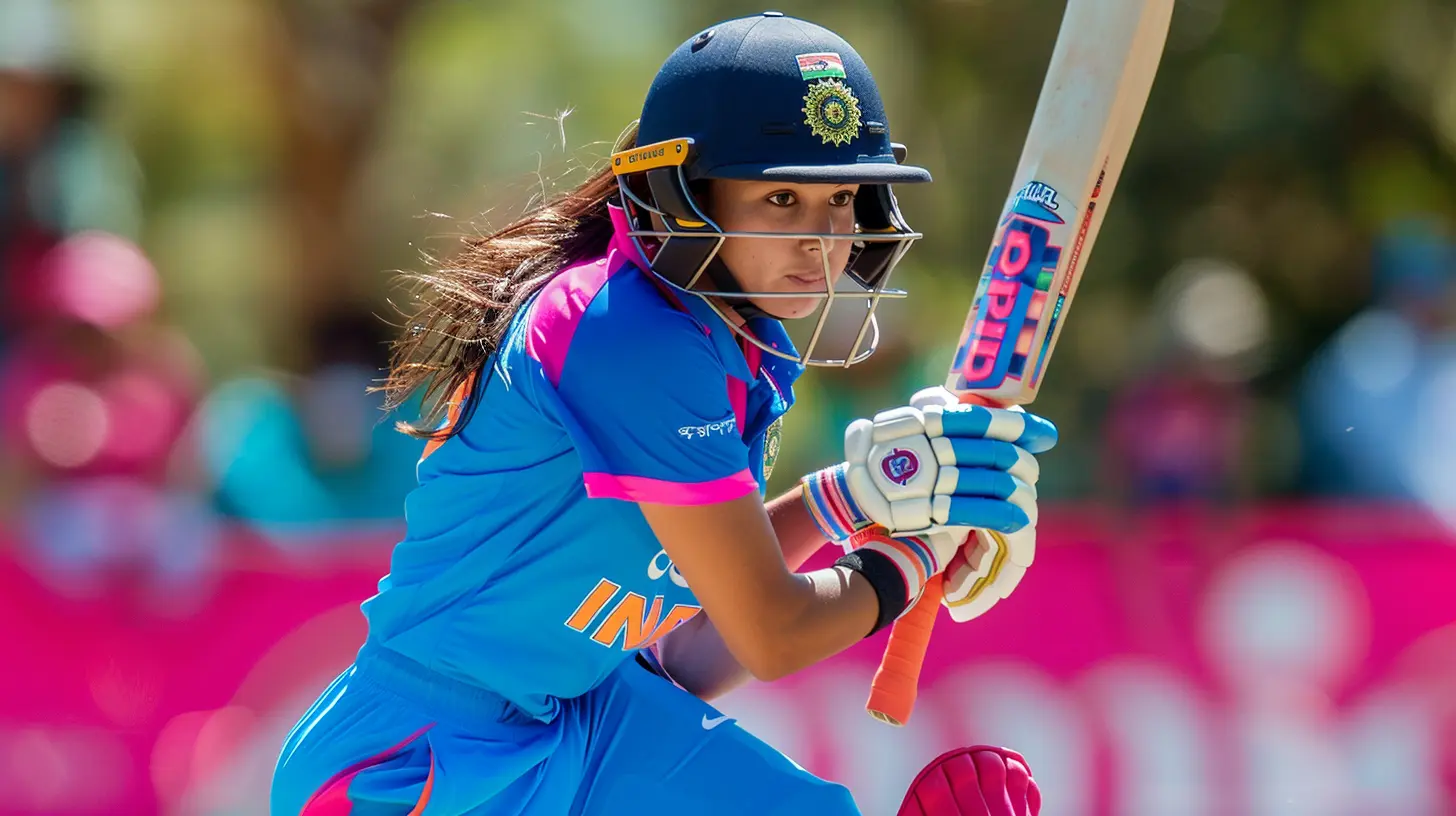The Rise of Women’s Cricket: A Game-Changer in the Sport
23 November 2025
Let’s face it—when you used to hear “cricket,” your mind probably jumped straight to legendary male players like Sachin Tendulkar, Virat Kohli, or Steve Smith. But now? The game is changing. Scratch that—it’s evolving, and women’s cricket is no longer sitting at the kiddie table. It’s taking a full swing (pun intended) at the big league.
Over the last decade or so, women’s cricket has seen a jaw-dropping transformation. From underfunded tournaments and half-empty stadiums to global viewerships and multimillion-dollar sponsorships—it’s safe to say women’s cricket is no longer in the shadows.
So grab your popcorn—or heck, a bat—and let’s dig into how women’s cricket has flipped the script and become a serious game-changer in the world of sports.
The Humble Beginnings: Not Always Glamorous
Back in the day, women’s cricket wasn’t exactly headline news. Most people didn’t even know it existed. The matches were played on dusty grounds, gear was borrowed (or non-existent), and financial support was somewhere between zero and nope.But here's the kicker—they played anyway.
Despite the stereotypes, societal expectations, and a serious lack of media attention, women cricketers pulled up their socks and showed up. Think of them as the underdogs in a sports movie—you know, the team that trains in a rundown garage but ends up winning the championship. Yep, just like that.
Fast Forward: The Momentum Picks Up
Now cut to recent years, and whoa—plot twist!Countries like Australia, India, and England began investing in their women’s teams. Suddenly, there were real coaches, actual broadcast deals, and (hallelujah) prime-time coverage. In India, the 2017 Women’s World Cup Final, where the Indian team narrowly lost to England, raked in millions of viewers. Literally—the entire country sat up and said, "Wait, our women’s team? They’re THAT good?"
That match? That was the moment the tide turned. It wasn’t just a game. It was a statement.
Social Media: The Unsung Hero of the Game
Let’s give credit where it’s due—social media has been a total MVP here.Platforms like Instagram, Twitter, and TikTok have given women cricketers a voice and a platform. Fans can now follow their favorite players, see behind-the-scenes moments, and engage directly without waiting for some broadcaster to decide if they’re "newsworthy."
Players like Smriti Mandhana, Ellyse Perry, and Shafali Verma have millions of followers hanging onto their every post. And let's be real—nothing says "you’ve made it" like trending on Twitter after a half-century.
The Big Leagues: Tournaments That Changed the Game
Okay, let’s talk tournaments. Because let's be honest—it’s not just about talent, it’s about visibility and platform. And thankfully, women’s cricket finally got its moments under the spotlight.ICC Women’s World Cup
This one's the granddaddy (or grandma?) of them all. With each passing edition, the Women’s Cricket World Cup is pulling more viewers, sponsors, and attention than ever before. The 2022 tournament? Absolute blockbuster.Women’s T20 World Cup
Shorter format, explosive fun. If you haven’t watched Women’s T20 yet, what are you even doing? It’s fast, it’s fierce, it’s full of drama—and no, I'm not talking soap-operas.The Hundred and Women’s Big Bash League
These tournaments in England and Australia respectively have given women players a professional platform that’s on par with the men’s game. We’re talking live TV, packed stadiums, and some truly outrageous sixes.Oh, and now there's the Women’s Premier League (WPL) in India. Yep, we're officially in the era of big contracts and bigger expectations.
Show Me the Money: The Financial Shift
Let’s talk moolah.Gone are the days when women cricketers had to juggle day jobs to support their careers. With leagues like WBBL, The Hundred, and WPL offering competitive paychecks, playing cricket is finally a viable profession for women.
In 2023, the Board of Control for Cricket in India (BCCI) even committed to equal pay for its male and female cricketers. FINALLY! That’s like someone at the dinner table going, “Hey, maybe she wants the last slice of pizza too.”
Role Models in the Spotlight
What do you get when elite athleticism meets charisma? Role models.Women cricketers are becoming household names. They’re on magazine covers, doing TED Talks, and even starring in ad campaigns.
Players like Mithali Raj, Meg Lanning, and Alyssa Healy have inspired thousands of young girls to pick up a cricket bat instead of, well, whatever society thought they should be doing instead.
And let’s not overlook the power of representation. When young girls see someone like them dominating the field, it sparks something powerful—dreams, ambition, and most importantly, belief.
Media Coverage: Better, But Still Climbing
While progress has been made, we’re still in the middle overs here (cricket pun intended).Media coverage is way better than it used to be, but there's still room for improvement. Women’s games are sometimes pushed to off-hours or get limited broadcast space. But hey, Rome wasn’t built in a day, right?
Still, the shift is noticeable. Mainstream sports channels now regularly feature women’s matches, and you’ll often see highlight reels make the daily sports wrap-up.
Yeah, that's right. Women’s cricket isn’t just a "by the way" segment anymore.
The Global Impact: Beyond Borders
Women’s cricket isn’t just rising in traditional cricketing countries—it's going full international.Nations like Thailand, Nepal, and the Netherlands are stepping up. Players from non-traditional cricketing backgrounds are now making it to international platforms. It's like cricket is throwing the biggest, most inclusive party, and everyone's invited.
International tournaments are also helping bridge the gender gap in sports by showcasing how thrilling, competitive, and downright entertaining women’s cricket really is.
The Fans: Loud, Proud, and Growing
Gone are the days when supporters of women’s cricket could all fit inside a school bus. Now? Try packing a stadium.The fan base is passionate, diverse, and—most importantly—loyal. They show up rain or shine, social media post in hand, ready to cheer on every boundary and wicket.
Cheers to the fans who believed in the game even when the world didn’t.
Challenges? Oh, There Are A Few
Alright, it’s not all sunshine and sixes.There are still challenges—unequal media time, lack of grassroots infrastructure, underrepresentation in coaching and commentary. Not to mention, the occasional troll who thinks he’s a cricket expert because he played gully cricket in 1998.
But here's the thing—cricket is a long game. And women’s cricket? It’s just getting started.
What’s Next: The Sky’s the Limit
With increasing investments, growing fan bases, and societal support tipping the scales in their favor, the future of women’s cricket is nothing short of exhilarating.Imagine a world where boys grow up idolizing female cricketers, tournaments are co-hosted equally, and sponsorships don’t require a gender prefix. Now that’s a world worth aiming for.
Final Over: Women’s Cricket Has Arrived, And It’s Here to Stay
So, what's the takeaway here? Simple. Women’s cricket is not “catching up.” It’s not playing second fiddle. It’s not a sideshow.It’s the main event.
The rise of women’s cricket is proof that talent, determination, and sheer love for the game can break barriers—gendered or otherwise. And if that’s not a game-changer, I don’t know what is.
So next time you hear someone talking cricket, lean in and ask—“Did you catch that insane innings in the Women’s T20 last night?”
Bet they did.
all images in this post were generated using AI tools
Category:
CricketAuthor:

Ruben McCloud

